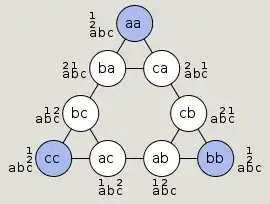First some pedantry. Binary is an alternative way to represent numbers rather than a different type of number. The numbers will have the same properties (e.g. commutative addition, primeness, etc), they will just be written differently. Many people use calculators and computers to perform arithmetic without knowing or caring that binary is probably being used inside.
An alternative base that I find different and amusing is Balanced Ternary. As the name suggests it uses three symbols but $0, 1, -1$ rather than the $0, 1, 2$ of regular ternary. It is convenient to use a single symbol for $-1$ otherwise expressions become ambiguous and confusing. It is not used often enough to have a well agreed symbol but I will use $\bar 1$. Sometimes $T$ is used as an approximation to this and sometimes an upside down $1$. So, how do you represent $2$? A little thought leads to $1 \bar 1$ which is one of the base ($3_{10}$) less $1$.
There are a number of uses but here is a simple and amusing one. Consider a simple old style weighing scales with two identical pans. You can place objects into the pans and read off whether they are equal in weight. You need to choose a set of $n$ weights which allow you to weigh the greatest range of whole number weights starting with $1$. Many people will jump to a powers of $2$ set e.g. $1, 2, 4, 8, 16$. This is quite good but you can do better by realising that you can place a weight in the same pan as the sample as well as the other pan. This allows negative weights. Now just $1$ and $3$ allow you to weigh $1, 2, 3, 4$ which is a bit better than $1, 2$. As the set gets bigger, the benefit increases. Try $1, 3, 9, 27, 81$ against the $5$ piece binary set just mentioned. Now if you label the weights in balanced ternary $1, 10, 100, ...$ and read those in the sample pan as negative $\bar 1, \bar 10, \bar 100, ...$ then the weights display the sample weight in balanced ternary.

